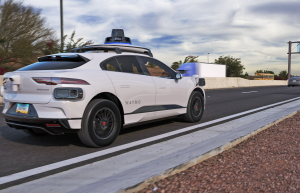Many people are familiar with the San Andreas fault line in California; however, north of it lies a lesser known but a more potentially deadline fault line - the Cascadia fault line, also called Cascadia subduction zone.
Cascadia runs 700 miles off the Pacific Northwest coast. It starts from Cape Mendocino in California, extends through Oregon and Washington and ends in Vancouver Island in Canada. Its name was derived from the Cascade Range, a series of volcanic mountains found around 100 miles inland, running parallel with the subduction zone, according to The New Yorker.
A subduction zone is that place where two tectonic plates meet, with one sliding beneath the other.
In the Cascadia subduction zone, the oceanic plate Juan de Fuca is sliding beneath the North American tectonic plate, but the North American tectonic plate is stuck above Juan de Fuca's surface, causing it to bulge upward at a rate of three to four millimeters a year and compress eastward at a rate of 30 to 40 millimeters a year, The New Yorker explains.
If part of the Cascadia gets unstuck, an earthquake with a magnitude of 8 to 8.6 will be felt. However, if the entire Cascadia gets unstuck, an event called full-margin rupture, the resulting earthquake can have a magnitude of 8.7 to 9.2. The ground will drop 6 feet at most and move 30 to 100 feet westward as the ground releases the tension it had been subjected to for centuries.
"As the two plates collide," geologist Ian Madin, head scientist at Oregon Department of Geology and Mineral Industries, explains, "the fault gets stuck, eventually slipping when enough stress builds up to produce a great earthquake," according to Fox 4 KC.
The earthquake is not the only problem scientists are predicting; a powerful tsunami will slam the Pacific Northwest coast 15 minutes after the earthquake hits and sweep over Sacramento all the way to Canada.
Kenneth Murphy, director of FEMA Region X, said that the devastation will be so great that "everything west of Interstate 5 will be toast." FEMA estimates a death toll of 13,000 people, with 27,000 more injured and an estimated total of 7 million people affected.
"This is one time that I'm hoping all the science is wrong," Murphy said, according to The New Yorker.
Kevin Cuppies, city planner for Seaside, Ore., said that tourists and the elderly will face the greatest risk if the earthquake should occur.
"We can't save them," Cuppies says. "I'm not going to sugarcoat it and say, 'Oh, yeah, we'll go around and check on the elderly.' No. We won't," he said, according to The Inquisitr.
Chris Goldfinger, a scientist who has been studying the Cascadia for years, said the odds of a powerful Cascadia earthquake happening in the next 50 years is one to three.
Goldfinger and other scientists conducted a study on seafloor samples and found out that the Pacific Northwest has had 41 subduction zone earthquakes in the last 10,000 years. Based on this pattern, the earthquakes happened every 243 years. The last one was in 1700, which means the Pacific Northwest is 72 years overdue for the next earthquake.
Goldfinger said preparation is the best way to cope with such a predicted event, but the region is nowhere near prepared for it.
"The science part is fun, and I love doing it," Goldfinger said. "But the gap between what we know and what we should do about it is getting bigger and bigger, and the action really needs to turn to responding. Otherwise, we're going to be hammered," he added, according to The New York Post.
© 2025 HNGN, All rights reserved. Do not reproduce without permission.








